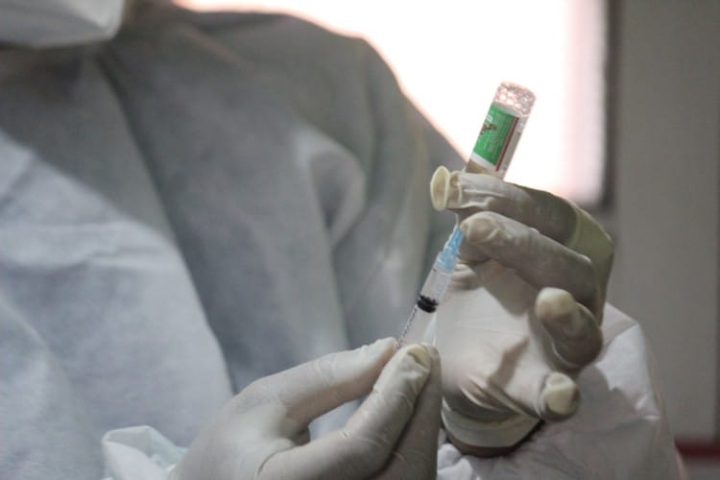
Tens of thousands of serious adverse events and more than 1,200 deaths were reported in the first two and a half months since the beginning of Pfizer’s COVID shot rollout, according to the FDA’s own documents.
The FDA has released 91 pages of the documents on the Pfizer shot’s safety and efficacy in response to the lawsuit filed against the agency by an international group of medical professionals, scientists, and journalists called Public Health and Medical Professionals for Transparency (PHMPT). There are another 329,000 pages that the agency is yet to make public.
“Two months and one day after it was sued, and close to three months since it licensed Pfizer’s Covid-19 vaccine, the FDA released the first round of documents it reviewed before licensing this product,” Aaron Siri, the lawyer who represents the group, wrote on his blog.
While the released documents represent only a tiny fraction of the massive amount of the medical data on the Pfizer shot, the information revealed in the documents raises serious concerns about the actual safety of the increasingly mandated drugs that are now also actively advertised to children as young as five.
Among the FDA documents released is a 38-page document entitled “CUMULATIVE ANALYSIS OF POST-AUTHORIZATION ADVERSE EVENT REPORTS OF PF-07302048 (BNT162B2) RECEIVED THROUGH 28-FEB-2021”(pdf), which outlines the general number of all “serious” adverse events (AE) as well as information on the demographics those adverse events occurred in in those countries that used the Pfizer shot.
It is useful to keep in mind that in the United States, COVID shots were first recommended to give to healthcare professionals and long-term residents of healthcare facilities, such as nursing homes. The first doses were administered in December 2020. Then Americans 75 and older and frontline workers, including police, firefighters, teachers, and grocery workers, could get the shot in January 2021. The general public began to get jabbed in March-April 2021, depending on the state.
Per the report, once the shots’ administration began, the pharmaceutical company received such a “large numbers of spontaneous adverse event reports” that it decided to prioritize the processing of “serious cases” to meet expedited regulatory reporting timelines.
In other words, Pfizer scientists were in such a rush that they could only “process” the “serious cases,” and the number of reports considered “non-serious” that were made during that period is not yet published.
The brief look at the number and nature of the reported cases is chilling.
Per the text,
Cumulatively, through 28 February 2021, there were a total of 42,086 case reports.
Geographically-wise, “Most cases (34,762) were received from United States (13,739), United Kingdom (13,404), Italy (2,578), Germany (1913), France (1,506), Portugal (866) and Spain (756); the remaining 7,324 were distributed among 56 other countries,” per the report.
The lion’s share of all AEs — 29,914 — was seen in women, and 9,182 occurred in men. The medics did not have any data on gender in 2,990 cases.
The majority of the affected recipients, 19,582 of them, either “recovered” or were “recovering” at the time of the report. 520 “recovered with sequelae” (developed a chronic condition), 11,361 have not recovered, and 1,223 people died following the inoculation with Pfizer shot. It remained “unknown” what happened to the 9,400 patients.
The biggest number of the AEs occurred in middle-aged people of 31-50-years of age (13,886), an age group that is generally at low risk of serious effects from the disease the jab is presumably designed to prevent. That group was followed by 51-64-year-olds (7,884). There were 5,214 seniors older than 75 who got adverse reactions to the shot, and 4,953 younger people between the ages of 18 and 30.
Of all the AEs following the vaccination, the general disorders and administration site conditions place first, accounting for 51,335 AEs. Then go nervous system disorders (25,957), musculoskeletal and connective tissue disorders (17,283), gastrointestinal disorders (14,096), skin and subcutaneous tissue disorders (8,476), respiratory, thoracic, and mediastinal disorders (8,848), infections and infestations (4,610), and injury, poisoning, and procedural complications (5,590).
The report also mentioned that there are “identified” and “potential” safety concerns related to the shot.
“Important identified risks” associated with the shot is anaphylaxis, which accounted for 1,883 AEs. Mayo Clinic defines the condition as “a severe, potentially life-threatening allergic reaction.” And also: “Anaphylaxis causes the immune system to release a flood of chemicals that can cause you to go into shock — blood pressure drops suddenly and the airways narrow, blocking breathing.”
There are also “Important potential risks,” such as Vaccine-Associated Enhanced Disease (VAED), Including Vaccine-associated Enhanced Respiratory Disease (VAERD). Per the report, “VAED may present as severe or unusual clinical manifestations of COVID-19.” Which means that people who took the shot may fall ill with severe case of COVID.
“Use in Pregnancy and lactation” is marked as a “Missing information” in the report. It is unclear why it is defined as “missing” when 413 AEs in pregnant women were reported. Eighty-four of them were “serious” and 329 “non-serious.”
Per the report,
Pregnancy outcomes for the 270 pregnancies were reported as spontaneous abortion (23), outcome pending (5), premature birth with neonatal death, spontaneous abortion with intrauterine death (2 each), spontaneous abortion with neonatal death, and normal outcome (1 each)…
146 non-serious mother cases reported exposure to vaccine in utero without the occurrence of any clinical adverse event…
124 mother cases, 49 non-serious and 75 serious, reported clinical events, which occurred in the vaccinated mothers. Abortion spontaneous (25), Uterine contraction during pregnancy, Premature rupture of membranes, Abortion, Abortion missed, and Foetal death (1 each).
Were all of those preborn babies dying in vaccinated mothers not a legitimate reason to halt the vaccination campaign in at least that vulnerable cohort? Apparently, they were not. The CDC recommends “pregnant people” to receive a COVID shot and even get boosted.
The report concluded that despite all of those AEs the benefits of COVID shots outweigh the risks.
Whatever happens to people after the vaccination, the vaccine manufacturers are shielded by the federal government from any liability.
Under the National Childhood Vaccine Injury Act of 1986, “if you’re a vaccine company and you injure somebody, no matter how grievous the injury, no matter how reckless your conduct, no matter how negligent you were, no matter how toxic the ingredient, nobody can sue you,” as Robert Kennedy Jr. put it.
The most recent regulations reaffirm that. Under the March 2020 Public Readiness and Emergency Preparedness Act for Medical Countermeasures Against COVID-19 (PREP) pursuant to section 319F–3 of the Public Health Service Act, Pfizer, Moderna and Johnson and Johnson are immune “from suit and liability under federal and state law with respect to all claims for loss caused by, arising out of, relating to, or resulting from the administration to or use by an individual of a covered countermeasure [COVID-19 vaccine].”
You can only take one of three COVID shots that the FDA defines (here, here, and here) as “investigational” (i.e. “experimental”) at your own risk and keep the world’s largest medical experiment going.




